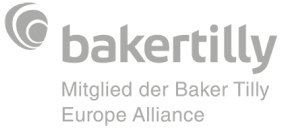Publication
21. May 2024
Reading Time: 4
Min.
publikationen
Study: Labor Costs in Central and Southeast Europe as a Location Factor
Vienna – The renowned tax consulting firm TPA, in collaboration with the HR consultancy Kienbaum, has published a study for the third time examining labor costs in twelve selected Central and Southeast European countries. The study, titled “Personnel Costs as a Factor in Location Decisions,” focuses on four groups of employees: Managing direcors, Executives, White-collar workers and Blue-collar workers.

Study: Labor Costs in Central and Southeast Europe as a Location Factor
0KB
.file not found
The third edition of the study reaffirms: Nearshoring remains a significant topic for businesses, with salary costs playing a crucial role in site selection. The study “Personnel Costs as a Factor in Location Decisions” appears for the third time, analyzing cross-border developments from 2023. Unique in its scope, the study explores an aspect previously underexplored in similar studies of these markets. It is based on gross wages in Albania, Bulgaria, Croatia, Montenegro, Austria, Poland, Romania, Serbia, Slovakia, Slovenia, Czechia, and Hungary. It examines both the total costs borne by employers and the net amounts employees receive at the end of the month.
Employer Personnel Cost Highlights
- Austria continues to lead in 2023 in total costs across all employee groups, recording the highest personnel costs.
- Following Austria, Slovenia, Czech Republic and Slovakia—all three direct neighbors of Austria—lead in all employee groups. Poland is catching up in some employee groups.
- Croatia and Hungary fall in the mid-range of total costs.
- Montenegro, Romania, Serbia, and Bulgaria show lower total costs, with varying rankings depending on the employee group.
- Albania consistently has the lowest total costs for all employee groups.
- Compared to previous years, total costs in Central and Southeast European countries have risen more sharply than in Austria, with Poland showing the largest jump.
It is notable that personnel costs in non-EU countries are comparatively low. Furthermore, countries that joined the EU in the first expansion round 20 years ago tend to have higher costs than countries with later EU memberships. Lower personnel costs are observed in Southeast Europe. However, other criteria such as education and qualification levels, as well as labor regulations, also play a role in location decisions.
Manufacturing Industry
Specific industry observations indicate that Central and Southeast European countries are popular outsourcing locations for the manufacturing industry. As a result of detailed industry analysis, the following points stand out:
- The order of countries has not changed compared to 2022.
- The personnel costs of workers in the manufacturing industry are generally lower than in other industries.
Net Salaries in Comparison
The study is based on varying gross wages across countries, leading to high net amounts in some cases, despite high taxes and social security contributions.
- In Austria, due to the highest gross wages, the highest net amounts are observed despite high taxes and social security contributions.
- Different tax systems (flat tax/progressive tax rate) and social security regulations lead to varying results depending on the employee group.
In Austria and Slovenia, the net-to-total-cost ratio increases as salaries decrease, primarily due to progressive tax systems and high maximum contribution limits for social security. In contrast, this ratio develops oppositely in Bulgaria and Serbia, owing to flat-tax systems and lower maximum contribution limits for social security. In these countries, high-earning individuals receive not only more in absolute terms but also in relation to total costs.
Comparing Bulgaria and Austria, a CEO in Bulgaria receives nearly 85% of the total costs as a net salary, while a low-income worker retains only 65% net. In Austria, it’s the reverse: the CEO’s net salary is less than 50% of the total costs, while a worker’s is 59%. This contrast arises partly from different tax systems (a flat 10% tax in Bulgaria, a progressive system with a marginal tax rate of 55% in Austria). Additionally, high-earning individuals in Bulgaria benefit from a lower annual social security contribution limit of EUR 23,040 (compared to EUR 84,840 in Austria).
Living costs vary significantly across countries. By examining the ratio between the employer’s total costs and the employees’ net amounts, one can discern how much each government collects in taxes and social security contributions, which is used to fund infrastructure, social security systems, and other important public goods and services.
Klaus Bauer-Mitterlehner, partner at TPA Austria, commented: “As an international company, cross-border business is a daily reality for us. We are pleased to present the study ‘Labor Costs in Central and Southeast Europe as a Location Factor’ for the third time, as it provides fascinating data that will aid business decision-making.” Klaus Bauer-Mitterlehner, along with fellow partner Thomas Haneder and TPA payroll and social security expert Wolfgang Höfle, are responsible for the study. Thomas Haneder added: “Personnel costs play a crucial role in location decisions for companies. High inflation rates and the competition for top talent are driving costs up in CEE/SEE. Even though these costs are rising faster than in Austria, the catch-up process in Southeast European countries will continue for a long time.” Cooperation partner for this project was Kienbaum Managing Director Alfred Berger. “Personnel decisions should not be based solely on compensation structures, as economic growth and inflation play increasingly important roles. Hidden costs may also stem from overtime taxation or the number of vacation days. However, variable compensation must not be overlooked,” remarked Alfred Berger.
Download section
About TPA: Figures and Facts
The TPA Group has over 2,050 employees across 11 other Central and Southeast European countries: Albania, Austria, Croatia, Montenegro, Poland, Romania, Serbia, Slovakia, Slovenia, Czechia and Hungary.






